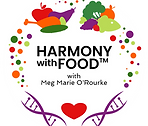Non Dairy Is Trending
Dairy Free Is Trending. Here Is Why. It is not just consumers motivated by animal rights (vegans) on the non dairy bandwagon. People with dairy intolerances, different cultures, health concerns and taste preferences are all leading to the rise in non dairy beverages. Consumption is increasing drastically. Upon contrasting and comparing, here is what I found. According to a study released in May by the USDA’s Economic Research Service, per capita fluid milk consumption has fallen from .96 cup-equivalents per day in 1970 to about .61 cup equivalents per day today. Blue Diamond reported that sales of almond beverages are growing at 80 percent annually. Supermarket shelves once exclusively reserved for dairy products have had to moooooove over. Alternative non dairy beverages, cheeses and yogurts are in demand. Consumers have growing concerns over dairy due to: - Hormones and Antibiotics - Autoimmune Diseases -Cardiovascular Disease -Cancer -Autism These are just of few of the reasons people are turning to milk alternatives. But are alternatives to milk the appropriate choice for everyone? First let’s review the most popular non dairy alternatives: Almond Milk-Available in original, vanilla, chocolate (sweetened and unsweetened). Depending on the brand an unsweetened cup has 30-50 calories. Sweetened almond milk can be up to 90 calories per cup with 17 grams of sugar. Almond milk has significantly fewer calories, fat and carbohydrates than Cow’s milk. However, almond milk lacks protein at only 1 gram of protein per cup. Cow’s milk has 8 grams of protein per cup. Recently, some companies have started to add protein to almond milk. Both are fortified with vitamins and minerals. Soy Milk-One of the first milk substitutes to arrive at the market place. Soy is the only milk substitute that has the equivalent amount of protein as cow’s milk, at 8 grams per cup. Most companies fortify with vitamins: A, D, B12 and calcium. Soy is one of the top GMO crops in the United States. Therefore, you may want to choose organic brands that use non-GMO ingredients, if you decide to choose soy milk. Coconut Milk-is similar to almond milk, but some find the taste better and texture creamier. It is made by blending coconut cream with water. This milk is made from saturated fats in the coconut, which are actually beneficial. Yes, some saturated fats such as coconut oil are made of medium chain triglycerides, which are good for your hair and skin for example. Coconut milk contains no fiber or protein which may result in earlier feelings of hunger compared to cow’s milk or soy milk. Rice Milk-is lighter and sweeter than almond milk or cow’s milk. However, it is high in carbohydrates and sugar and has zero protein. This has the lowest nutrient value of all the milk substitutes. However, it may be an appropriate choice for a person with allergies to nuts or seeds. Flax Milk—is very low in calories at 25 calories per cup. Most companies make flax beverages by combining flax oil with water and emulsifying agents, plus thickening agents. Some companies add protein to equal about 5 grams of protein per cup. Flax milk (depending on the brand) has 1200 mg of omega fatty acids which are beneficial for your immune system, cholesterol levels and may aid in lowering blood pressure. As a food and nutrition expert, I believe that the recommendation of limiting dairy for prevention of

cancer or autism is at best confusing. The science based evidence is inconclusive. Dairy products are the main dietary source of calcium, an essential nutrient for bone health. However, not all dairy products are made the same. Not all protein such as chicken are made the same either. For example, compare boneless skinless chicken to a deep fried fast food chicken. Now let’s compare a fat free cheese with zero grams of fat per ounce (tastes like rubber) to a full fat cheddar cheese with 10 grams of fat per ounce. I explain to my clients that not all chicken is bad, neither is all cheese bad. I tell my clients to look for cheeses that have less than 300 mg of sodium and less than or equal to 6 grams of fat per a one ounce serving. In summary, we should focus on whole, healthy foods. Calcium should be part of a well balanced diet. For those of us who have intolerances or allergies to dairy, some of the alternatives listed above may be great options. Thanks for reading. Did you know I offer free videos, free blogs and free recipes on my web site? http://www.harmonywithfood.com Just sign up if you are new or go to "log in" tab if you have signed up previously. XO Meg

.png)



















